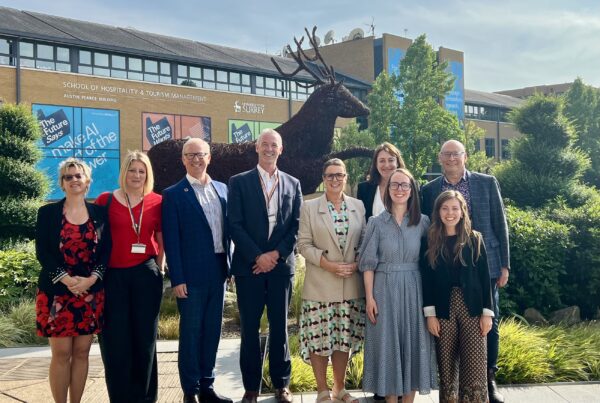Lifelong learning requires meeting learners where they are at
The classical picture of a participant in the higher education system has been of a young school leaver, often realising their parents’ dreams, going to a highly regarded place of higher education. Parents have in the past, invested heavily in creating the opportunity for this to be possible, and underwriting the investment. Is this still the prevailing dream, support and investment pathway relevant for the full range of lifelong learners of 2023 and the future?
For some, it is. The dominant school leavers of the upper quartile of socio-economic status families are, as they have always been, almost guaranteed entry to a highly exclusive and reputed place of study, with little risk from debt. Meanwhile, participation rates for school leavers from lower quartiles is much lower and has barely changed in much of the US, UK and Australia. After years of focus on widening participation we have barely moved the dial. Some recent data suggests participation rates for this group is more at risk of declining than growing.
How has the wider system of learning, accepted and responded to this challenge? Is it doing enough to change it for the benefit of equity of opportunity for learners and needs for a future workforce of employers? Some corporate providers are adopting lifelong learning based strategies to change it. But for many universities, particularly those driven by their reputation and rankings, exclusion pervades as a strategy and culture. They are obliged to operate with regulators who can appear to protect the exclusive culture and present barriers to greater innovation and inclusion.
Bold leaders of real change in the system, whether in universities, private providers or other participants, have to be resilient and resolute in leading change for genuine societal and national benefit. One group that is becoming pivotal in driving change is employers. Shortages in the supply of future workers, arising from birth gaps and declining future population, is becoming critical. Increasingly, the war for talent means employers are having to look beyond traditional degrees, and universities, to source the skills and capabilities they rely on for their future workforce.
But this change is going further than a challenge to the traditional degree and to universities. For both employers and learners, places of learning and places of work are becoming indistinguishable. Conceiving of them as one place is key to unleashing a flow of needed talent for a future of work, of the required capacity and capability.
This phenomenon requires us to re-examine the dichotomy between skills and education. It calls on us to open up learning content and opportunities for multiple purposes and diverse audiences. This requires us to advance and scale up real work integrated learning. The scenario of 4+1 days in a working/learning week of tasks plus learning is indicative of an inevitable future revolution towards lifelong learning.
This new scenario needs new sources of learning to emerge. These may come from new partnerships between universities, employers and facilitators of increased partnerships between the two. These are required to broker links between universities who can struggle to work with employers and vice versa, in a situation where they need each other more than ever.
There has been a history of university and employer relationships building up around certain professions and disciplines. Nursing, engineering, accountancy and teaching professions rely on this model globally. The traditional principles of accreditation and of placements, and of industry advisory boards and visiting industry teaching staff have been early attempts to bridge this relationship and relevance gap.
But accreditation has become fundamentally challenged as a process when technology and practice changes so rapidly. In addition, the widespread evidence of placement poverty, and of declining domestic enrolments at times of high employment, all show us a system that is broken.
We increasingly need our learning providers and their culture, to value the things that learners value. And we need a much greater focus on innovation in learning to overcome declining confidence in the higher education system.
Recent data in the US suggests that net public confidence in higher education as a system has become negative. This appears to be substantially driven by an outdated culture. It now needs us to overcome a resistance to seeing students as customers for whom we need to measure their experience. With accelerating technology changes this is becoming more important. It is making the need to prepare graduates for lifelong working and learning more challenging.
One could argue that higher education has gone from being a rite of passage for the privileged few, to now being more directly connected to the need to close skills gaps. The over-riding sense is that education increasingly needs to meet people, both learners and employers, where they are at. This means both in the multiple and continuous life stages of their turning to learning, and the skills they need for its primary purpose for them of being productive in a changing world of work. Meeting learners where they are at increasingly means through technology and at work and at times that suit them and through the facilitation of others. It has long left being an absolute requirement for it to be on campus, face to face only, and at times that suit us and our systems.
We discuss many of these issues in a future episode of the HEDx podcast you will shortly be able to access on the HEDx website or on Apple and Spotify platforms.
First published in Campus Review on 1st November 2023.
Professor Martin Betts, Founder of HEDx
Brandon Busteed, Chief Partnership Officer and Head of Learn-Work Innovation, Kaplan
Dr Nora Koslowski, Chief Learning Innovation Officer, Melbourne Business School









